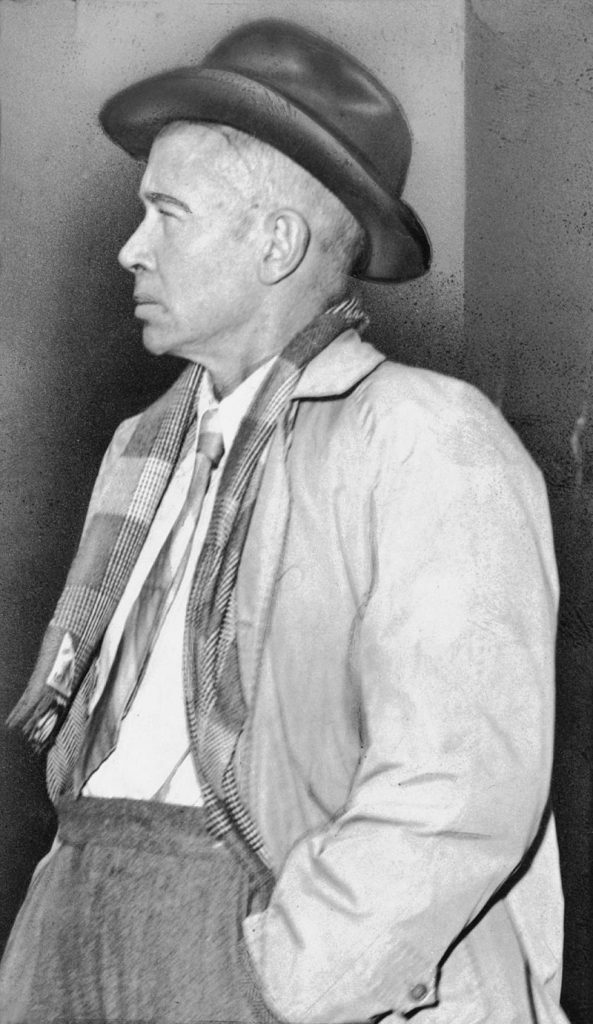68 e.e. Cummings (1894 – 1962)
Amy Berke; Robert Bleil; Jordan Cofer; and Doug Davis

Photographer Walter Albertin
Source Wikimedia Commons
Public Domain
Like a number of the modernist poets, e. e. cummings came from a family of teachers and ministers. But while many of his contemporaries were active members of the artistic communities of New York, Boston, and Philadelphia, cummings was a more solitary figure whose poetry and politics tended toward the everyday and the common. This is not to say that cummings was a passive observer of the world around him: while serving overseas during World War I, cummings and a friend were held by the French on charges that their letters home were derisive of authority and of the general war effort. At home in New York, however, cummings seems to have avoided the style of poetry and pronouncements that made his contemporaries like Pound, Williams, Moore, and Stevens into vanguards of Modernist poetry.
Nonetheless, contemporary readers are often startled by the appearance of cummings’s poetry on the printed page. Eschewing capitalization, punctuation, and standard verse forms, cummings’s works take full advantage of the printed page to present poems that are often better suited to private reading than public performance. Where the lack of punctuation and capitalization may disarm readers more accustomed to being told how to vocalize a poem, cummings’s verses are presented without a beginning or an ending so as to allow the reader to move through a collection of cummings’s verse in a way that befits the private reading experience. Like Marianne Moore, who also paid careful attention to the presentation of her works in print, cummings embraced the opportunities that modern print culture provided to poets.
The selection from cummings in this unit, “in Just-,” published in 1920, demonstrates many of the attributes that are common in cummings’s verse. This poem can be said to begin without a beginning, withholding even the suggestion of where these lines fall in the consciousness of the poetic voice. And yet, while cummings does away with many aspects of poetry, the beginning of the poem is still familiar to the reader. Consider the beginning of the poem written out in prose: in Justspring when the world is mud-luscious the little lame balloonman whistles far and wee. Written out this way, the reader can quickly ascertain the meaning of the first few lines, but it is not the form on the page, verse or prose, that makes this possible, but the fact that these lines follow an elementary syntax that feels natural to the ear, even if the eye is confused by the physical arrangement.
Once the first lines of the poem have been mastered, more traditional patterns begin to emerge for the reader. The three-times repetition of the words, “balloonman whistles far and wee,” divides the poem into two sections describing the games and adventures of two groups of children, Eddie and Bill and Betty and Isbel. With these children, celebrating the early days of spring, the Just-spring of the opening lines are full of movement and energy in contrast to the infirmities of the balloonman; nonetheless, all five are part of a vignette whose appearance in the poem suggests further adventures to come. Although unusual in its shape and punctuation, cummings’s poetry is linked to the same rhythms of life that have captivated poets from Chaucer to Eliot.

